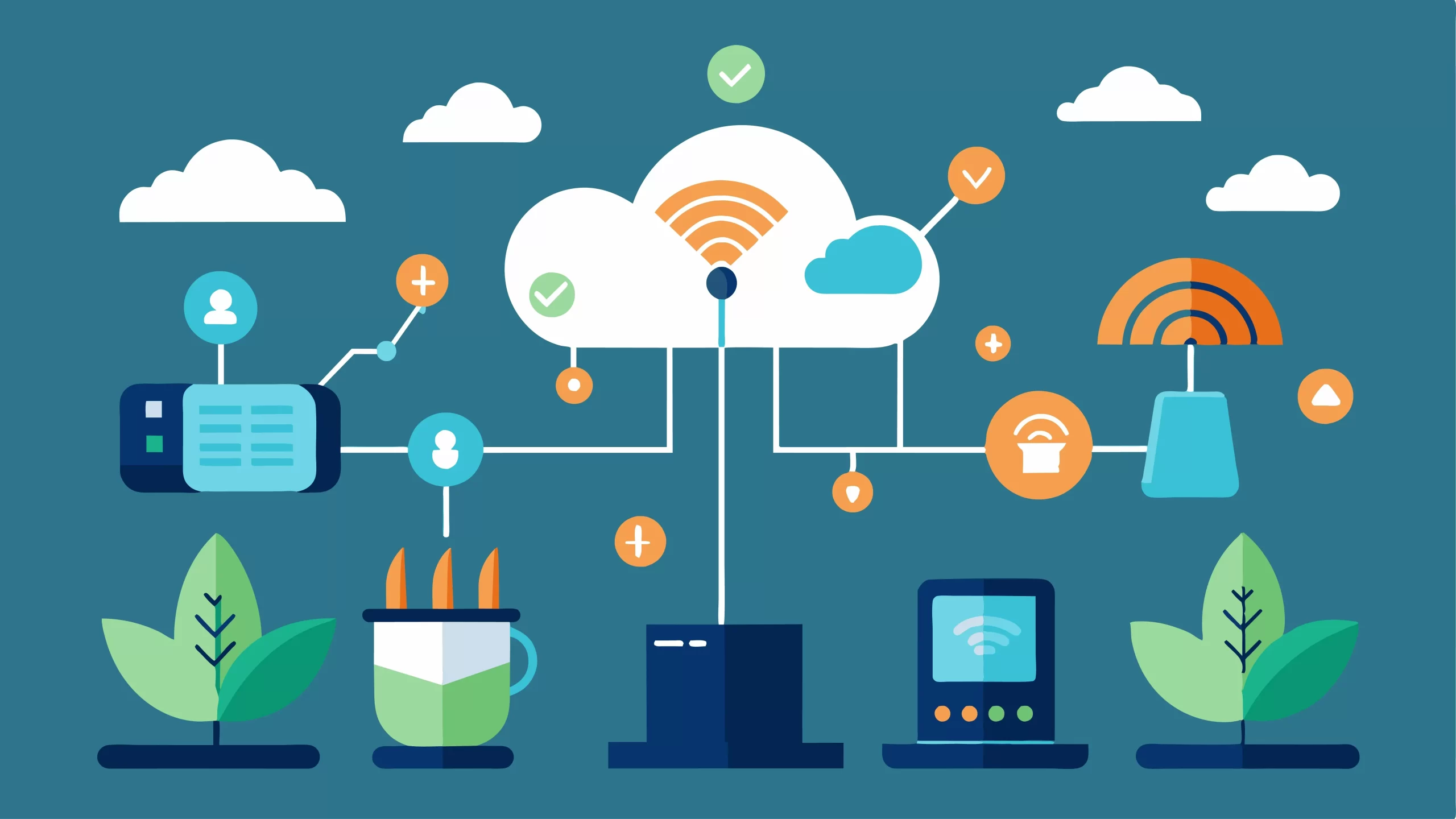
Introduction to Enterprise Application Platforms (EAPs);
In today’s fast-paced digital world, businesses are constantly on the lookout for tools that can enhance productivity and streamline operations. Enter Enterprise Application Platforms (EAPs), the backbone of modern organizational efficiency. These platforms have evolved dramatically over the years, transforming from rigid systems designed for specific tasks into versatile ecosystems that drive innovation and collaboration across all departments.
As we delve deeper into this evolution, it’s fascinating to see how EAPs have adapted to meet changing demands. Gone are the days when software was merely a box to tick; today’s solutions are dynamic, flexible, and essential in navigating a complex business landscape. Join us as we explore current trends shaping these powerful platforms and discover what lies ahead for organizations eager to embrace the future of work.
Evolution of EAPs: From Traditional to Modern
The landscape of Enterprise Application Platforms (EAPs) has undergone a remarkable transformation over the years. Initially, organizations relied on monolithic systems that were complex and inflexible. These traditional platforms often required extensive IT resources for maintenance and updates.
As technology advanced, businesses began to shift towards more agile solutions. The rise of web-based applications marked a pivotal change. Companies started embracing modular architectures, allowing them to integrate various functionalities seamlessly. This evolution paved the way for cloud computing, which further revolutionized EAPs by offering scalability and cost-effectiveness. Now, businesses can deploy applications without hefty upfront investments in hardware or infrastructure.
Modern EAPs harness powerful tools that enhance collaboration and productivity across teams. They embrace user-centric designs, ensuring intuitive interfaces that cater to diverse business needs while streamlining processes efficiently. As we look forward, this journey from traditional setups to dynamic ecosystems continues to reshape how enterprises operate today.
Current Trends in EAPs:
The landscape of Enterprise Application Platform is rapidly shifting, influenced by several key trends.
Cloud Computing and SaaS:
Cloud computing has revolutionized how businesses operate. It allows organizations to store and access data over the internet, eliminating the need for extensive on-premises infrastructure.
Software as a Service (SaaS) fits seamlessly into this model. Companies can now subscribe to software solutions rather than installing them locally. This shift reduces costs and simplifies updates. Collaboration improves when teams leverage these technologies. Real-time sharing boosts productivity and enhances communication across departments worldwide. Cloud computing paired with SaaS fosters an agile workplace where innovation thrives continuously.
Mobile Applications and BYOD Policies:
Mobile applications have transformed the workplace, enabling employees to access essential tools and data from anywhere. This flexibility enhances productivity and supports a more dynamic work environment.
Bring Your Own Device (BYOD) policies play a crucial role in this shift. Employees prefer using personal devices for work tasks due to familiarity and convenience. Companies benefit by reducing hardware costs while boosting employee satisfaction. However, adopting BYOD comes with challenges. Organizations must ensure robust security measures are in place to protect sensitive company information on personal devices. Striking a balance between accessibility and security is key.
Artificial Intelligence and Machine Learning Integration:
Artificial Intelligence (AI) and Machine Learning (ML) are transforming enterprise application platforms in profound ways. These technologies enable systems to analyze vast amounts of data, leading to smarter decision-making.
Organizations can now automate routine tasks that once required human intervention. This not only boosts efficiency but also allows employees to focus on more strategic initiatives. The integration of AI-driven insights can help businesses predict trends and improve customer experiences. This shift represents a significant leap forward for EAPs. They are no longer just tools; they’re becoming intelligent systems capable of evolving alongside business needs.
Low-code/No-code Development:
Low-code and no-code development platforms are transforming the way businesses create applications. These tools empower users with little to no programming knowledge to build software solutions tailored to their needs.
By using visual interfaces, drag-and-drop features, and pre-built templates, these platforms simplify the app development process. This democratization of technology fosters innovation across various departments, allowing teams to respond quickly to evolving demands. Organizations can accelerate project timelines significantly while reducing reliance on IT specialists. The efficiency gained through low-code/no-code environments often leads to higher productivity levels among employees.
Microservices Architecture:
Microservices architecture represents a significant shift in how applications are built and managed. Rather than relying on monolithic designs, businesses now leverage small, independent services that communicate through APIs.
This approach enhances agility and flexibility. Each microservice focuses on specific business functions, allowing teams to develop, deploy, and scale them independently. This means faster updates and reduced downtime for users. Additionally, microservices can be developed using different technologies best suited for each service’s needs. This diversity fosters innovation while aligning with various development practices across organizations.
As organizations embrace this architecture model, they find it easier to adapt to changing market demands and improve overall operational efficiency.
Challenges and Obstacles in Adopting EAPs;
Adopting Enterprise Application Platforms (EAPs) isn’t without its hurdles. Organizations often face resistance from employees who are accustomed to legacy systems. Change can be daunting, leading to hesitation and pushback.
Budget constraints also play a significant role in the adoption process. Investing in new technology requires careful financial planning, which can deter businesses from fully committing to EAPs. Integration with existing systems presents another challenge. Many organizations operate on diverse software environments that may not easily mesh with new platforms, complicating implementation efforts.
Furthermore, ensuring proper training for staff is crucial but often overlooked. Without adequate training programs, users might struggle to adapt, undermining the platform’s potential benefits. Lastly, data security concerns loom large as companies transition their operations online. Balancing innovation with risk management remains a tough act for many enterprises venturing into EAP territory.
Future Predictions for EAPs:
The future of Enterprise Application Platforms (EAPs) is poised for exciting transformations. As organizations adapt, EAPs will become central hubs for innovation—driving growth in previously unimagined ways while meeting rapidly changing demands in the business landscape.
- Increased Focus on Security and Data Privacy: As enterprise application platforms evolve, security and data privacy have taken center stage. Organizations now face an unprecedented level of cyber threats. This heightened risk demands a robust approach to safeguarding sensitive information. Businesses are prioritizing encryption and multi-factor authentication as standard practices. These measures enhance protection against unauthorized access and data breaches. In this landscape, proactive monitoring tools are gaining traction. They provide real-time insights into potential vulnerabilities, allowing organizations to address issues before they escalate.
- Greater Integration with Emerging Technologies: The rise of emerging technologies is reshaping the landscape of enterprise application platforms. Businesses are now looking for systems that seamlessly integrate with innovations like blockchain, IoT, and augmented reality. This integration opens up new avenues for efficiency and productivity. For instance, connecting EAPs to IoT devices allows real-time data collection. It enhances decision-making processes across various departments. With a focus on interoperability, businesses can create customized solutions tailored to their unique needs. The ability to connect different systems leads to more cohesive operations and innovative workflows in an increasingly digital world.
- Customization and Personalization for Users: Customization and personalization have transformed how users interact with enterprise application platforms. Today, businesses recognize that a one-size-fits-all approach simply does not work. Users expect solutions tailored to their specific needs. This demand drives organizations to develop applications that adapt based on individual preferences and behaviors. Dynamic dashboards allow employees to view relevant data at a glance. Custom workflows streamline processes unique to each department’s requirements.
By prioritizing customization in EAPs, businesses position themselves for future success in an ever-evolving landscape of technology and workforce expectations.
Conclusion:
The landscape of enterprise application platforms is dynamic and ever-changing. Businesses must embrace adaptation and innovation to stay competitive in this fast-paced environment. As technology continues to evolve, so too do the needs of organizations.
Adopting EAPs allows businesses to streamline operations, enhance collaboration, and improve overall efficiency. However, the journey doesn’t come without challenges. Companies must navigate issues such as security concerns and integration hurdles while remaining open to new technologies that emerge every day. Looking ahead, organizations that prioritize customization will thrive. Users want tools tailored specifically for their unique workflows and preferences. By focusing on personalization alongside robust security measures, companies can create a more effective work environment.
Through understanding current trends and anticipating future developments, businesses can position themselves at the forefront of this evolution—turning challenges into opportunities for growth.
